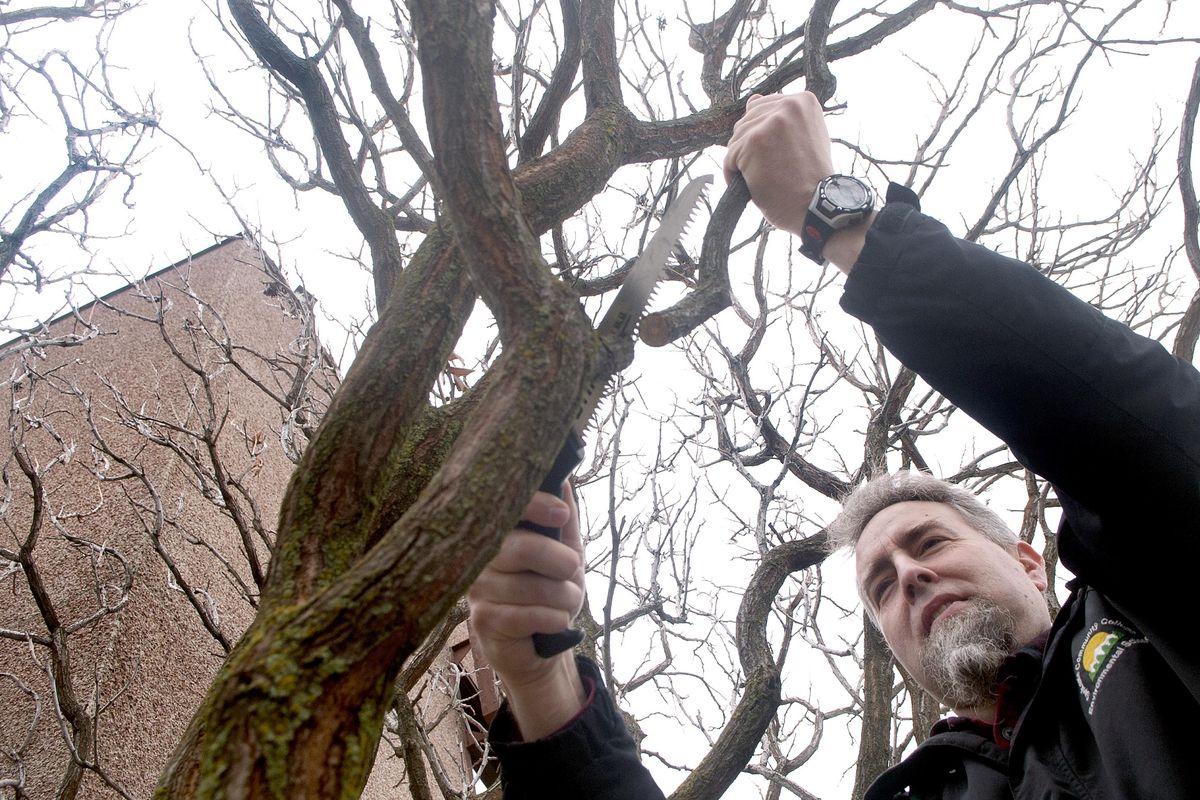In the garden: Pruning correctly helps keep trees and shrubs healthy

Hold it right there. Where are you going with those pruners?
Before any of us head into the garden for a pruning session, Tim Kohlhauff wants us to have a darned good reason. As Urban Horticulture Coordinator for WSU/Spokane County Extension, and from his previous position as staff arborist for the Spokane Country Club, he knows a thing or two about pruning.
“It’s something of a myth that pruning needs to be done every year,” he said. “It should only be done if it accomplishes a goal you have for the plant. Mature trees often go several years between pruning while newly planted trees and shrubs don’t require pruning until they are established in two to three years.”
The best reasons for pruning include increasing fruit production, addressing trees that are a hazard and removing dead, diseased or crossed branches.
Topping trees is a bad idea because those cuts don’t seal well, which opens a tree to decay.
“Over time, this weakens the structure of the tree,” Kohlhauff pointed out. “It also causes a lot of fast-growing branches around the cut and soon the tree will be nearly the same size it was before topping.”
His favorite pruning tools are hand pruners and a pruning saw.
“I use bypass-style pruners rather than the anvil type, which tend to crush branch tissue. The blades on bypass pruners work like scissors so they make cleaner cuts,” he said. “I use a smaller-size pruning saw because it makes more precise cuts and is easier to handle. I avoid using loppers because I always try to cut a branch that is too big and end up with ripped edges.”
Making a good pruning cut is essential because it impacts the tree’s ability to heal from that cut.
“The branch collar is the swollen area at the base of the branch, and this tissue seals the wound created by pruning,” Kohlhauff explained. “Flush cuts that remove the branch collar leave wounds that seal more slowly at best; at worst, they won’t ever close.”
Conversely, stub cuts – leaving a few inches of the branch – are difficult for the tree to recover from. The tree has to grow tissue up the side of the stub and across the cut.
This brings us to the annoying issue of suckers and water sprouts.
“Suckers come from the roots of a tree and are its way of growing new stems or trunks,” he said. “I usually remove them.
“Water sprouts are fast-growing branches that grow vertically in a tree canopy,” he continued. “While they grow in response to an injury, heavy pruning is more likely to cause them to grow.”
Kohlhauff usually advises pruning during the dormant season, but for those species prone to water sprouts, it’s better to prune them in early summer after spring growth.
It’s only natural to want to remove all of the water sprouts in a single pruning session. Unfortunately, if one removes too many, the tree’s natural response is to grow even more. Kohlhauff feels that removing 25 to 30 percent of the water sprouts is a good practice, especially if done during the summer months.
For general pruning, there is an important rule of thumb to follow:
“No more than 25 percent of live canopy should be removed in a year’s time although you can prune all the dead tissue you want,” Kohlhauff said. “However, if your tree is weak – old, diseased, dying back or not growing very fast – you should limit your pruning to 10 percent annually to avoid adding stress to the plant.
“Leaves are a plant’s source of food, or growth energy, so removing branches deprives it of energy. Pruning also creates wounds on the plant and sealing those wounds requires energy,” he added.
Kohlhauff mentioned that using sealing paint is not necessary in this region, noting that it inhibits a plant’s natural ability to heal.
Another reason a person might want to do some serious pruning is when a tree or shrub is too large for its place in the garden. If reining in the plant is an annual chore, he has a suggestion:
“Maybe it’s time to replace that plant. Picking the right plant for the right place is absolutely the best way to be successful. No matter what the site is like, there is a plant that will fit!”
Learn about pruning fruit trees in this week’s “Everyone Can Grow a Garden” video, at youtube.com/c/susansinthegarden.
Susan Mulvihill is co-author, with Pat Munts, of “Northwest Gardener’s Handbook.” Contact her at Susan@susansinthegarden.com.